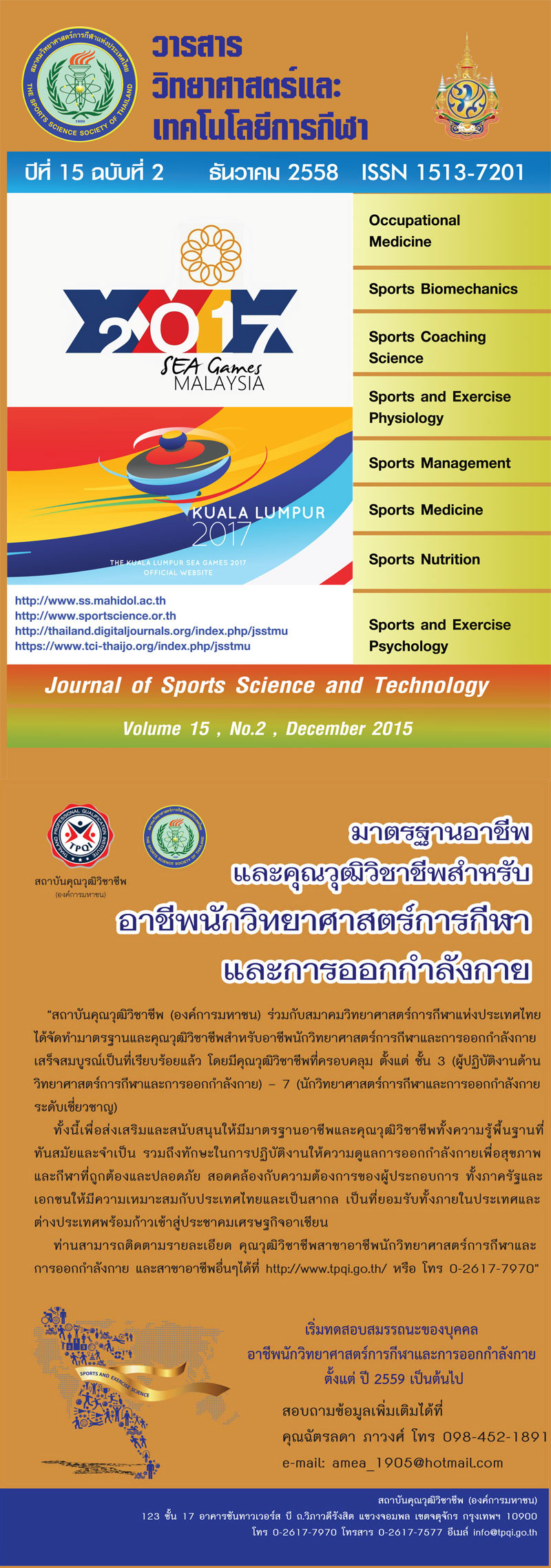KNEE JOINT KINETICS DURING SINGLE-LEG JUMP LANDING IN FEMALE ATHLETES
Keywords:
Net joint moment, Net joint Reaction Force, Single-leg jump landingAbstract
Single-leg jump landing in various directions is a common task in sport activities. The aim of the present study was to investigate joint kinetics including knee net joint forces (KNJFs) and knee net joint moments (KNJMs) during single-leg jump landing. Material and method: Vicon™ motion analysis system and AMTI forceplate were used to collect the data. Nineteen female volleyball athletes were asked to perform the single-leg jump landing from a 30cm height platform in four directions including forward (0°), 30°diagonal, 60°diagonal, and lateral (90°) directions. The result exhibited that direction of single-leg jump landing significantly influenced (p<0.05) to peak KNJFs and KNJMs. A decreasing trend of peak anterior KNJF and an increasing trend of peak lateral KNJF were noted in forward, 30°diagonal, 60°diagonal and lateral jump landing, respectively. Significantly greater internal rotator and significantly less extensor of KNJMs were found during landing in lateral direction. Conclusion: Altered knee joint loading was observed in multi-directions jump landing. Jump landing in lateral direction might have a higher risk of knee injury because of a high lateral KNJF and internal rotator KNJM. Jump-landing training in multi-directions should be focused in order to prevent knee injuries. Athletes should perform landing carefully in diagonal and lateral jump-landing activities such as volleyball blocking and basketball lay-up.(Journal of Sports Science and Technology 2015; 15(2) : 11-17)
Downloads
Published
2015-12-28
How to Cite
1.
SRISANGABORIBOON S, SINSURIN K, VACHALATHITI R. KNEE JOINT KINETICS DURING SINGLE-LEG JUMP LANDING IN FEMALE ATHLETES. J Sports Sci Technol [internet]. 2015 Dec. 28 [cited 2025 Dec. 20];15(2):11-8. available from: https://he01.tci-thaijo.org/index.php/JSST/article/view/44931
Issue
Section
Research Article






